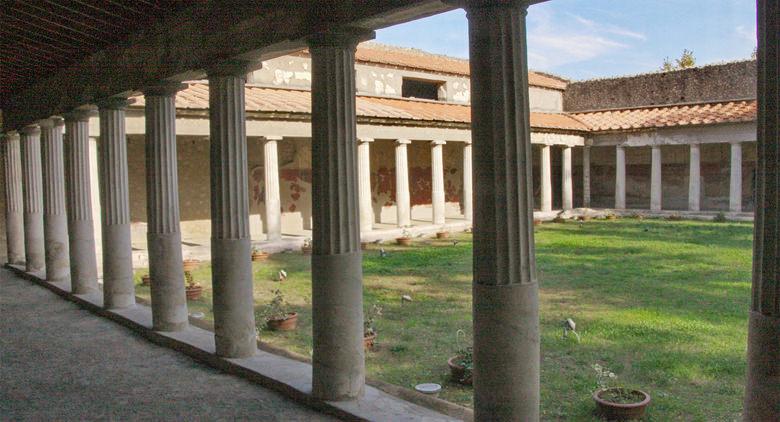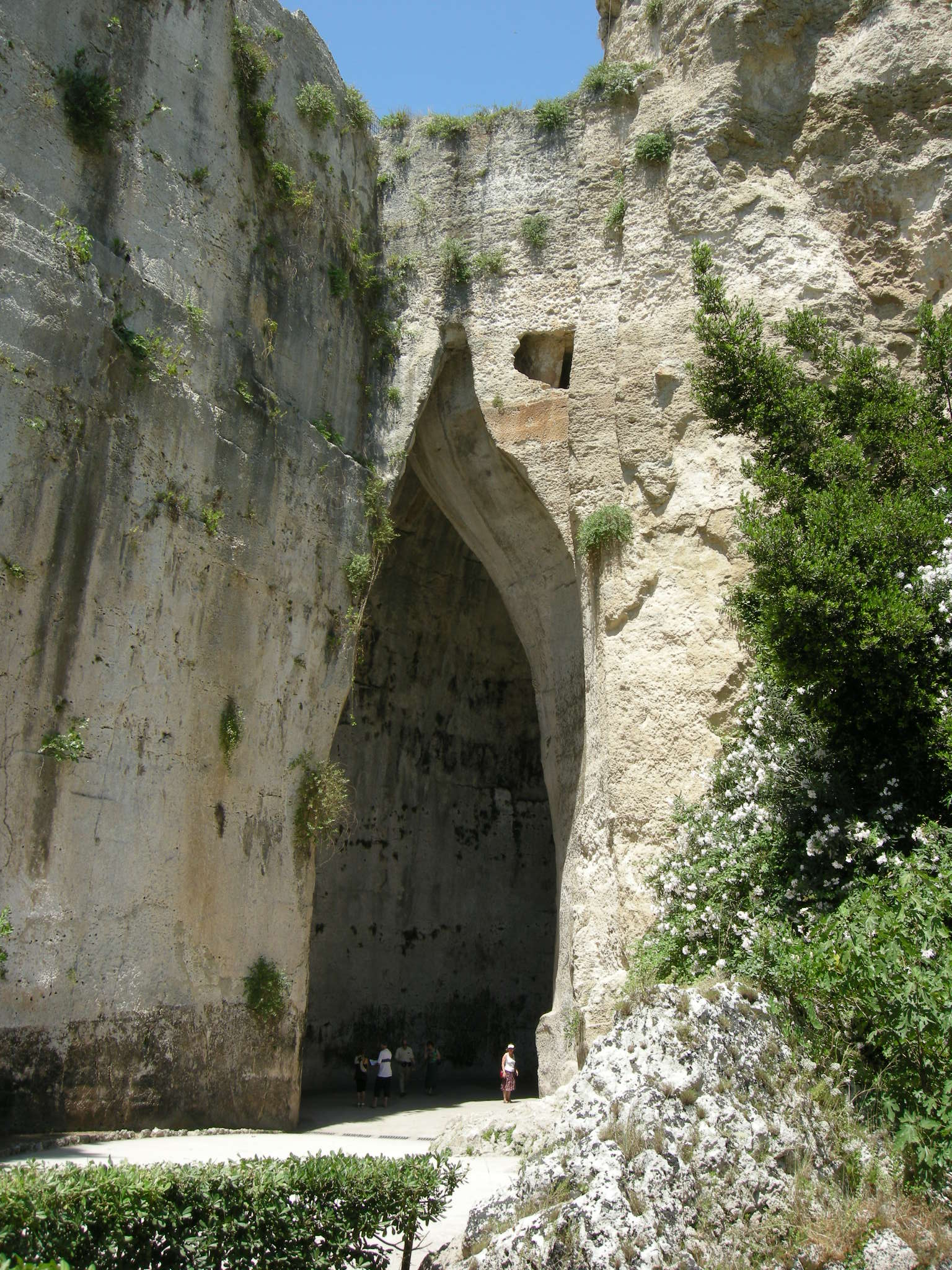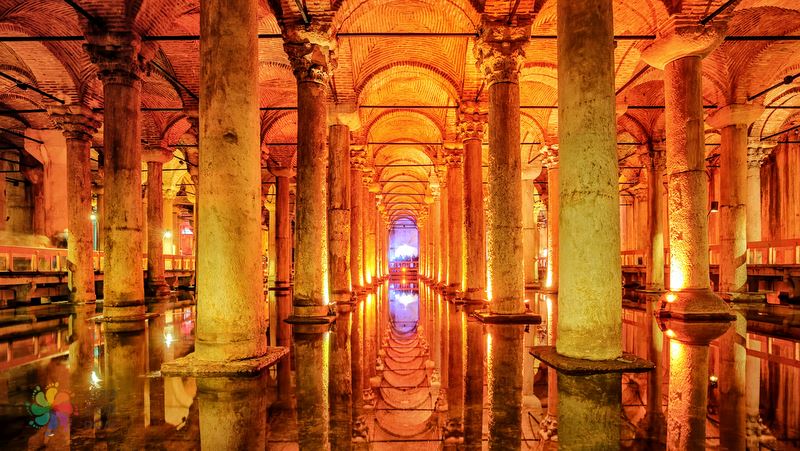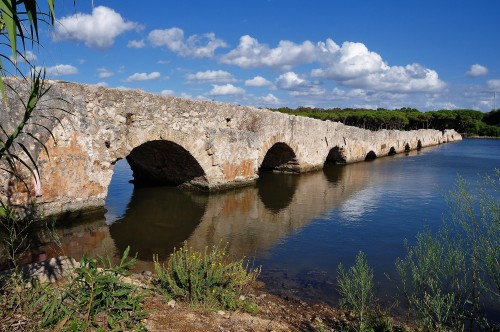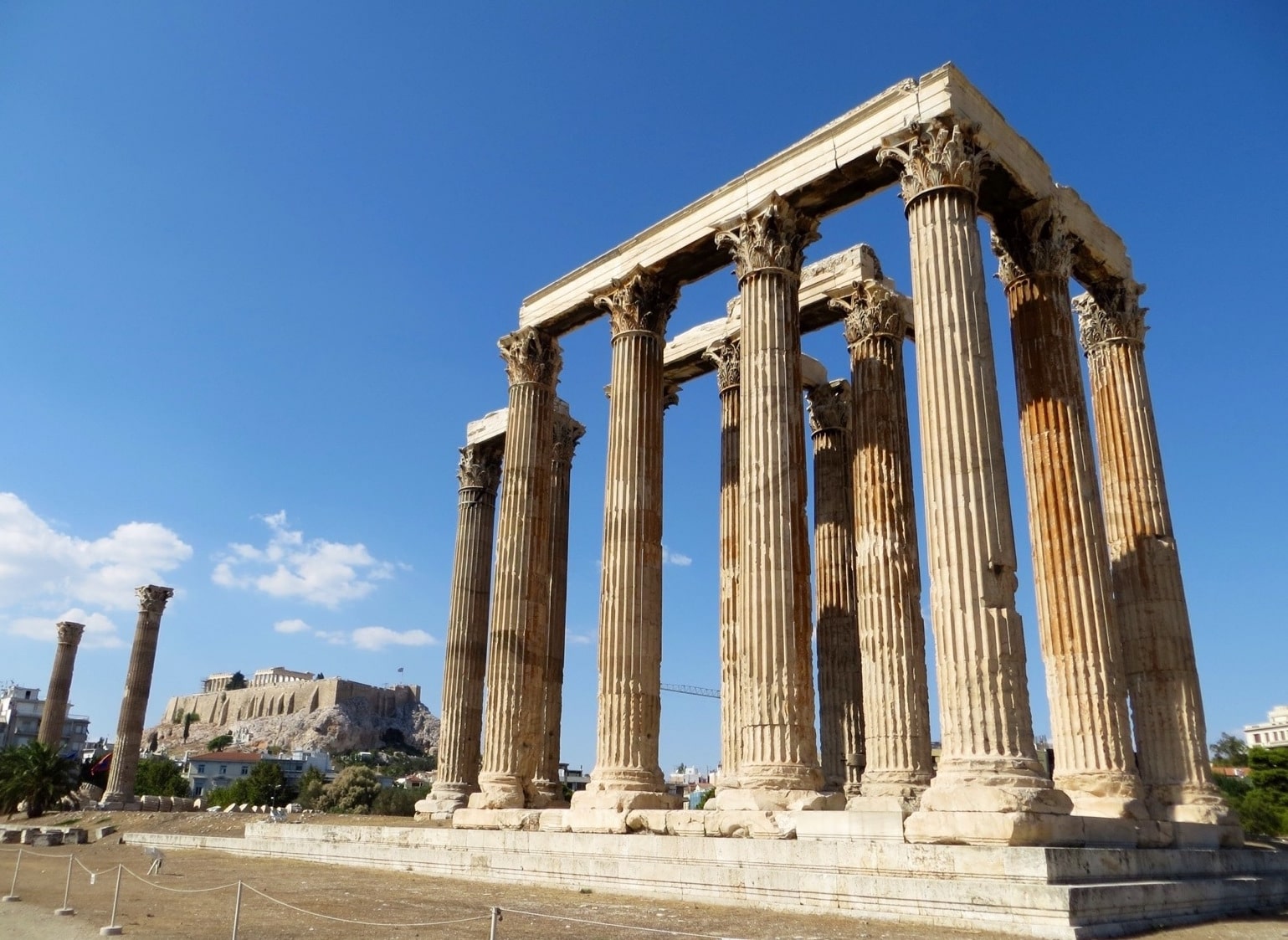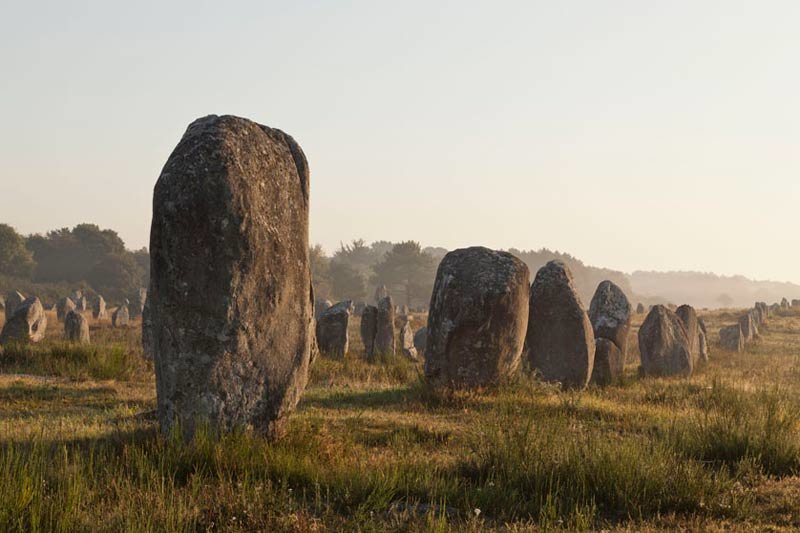The excavations of Oplontis are located in the centre of the modern town of Torre Annunziata. The name Oplontis is attested only in the Tabula Peutingeriana, a medieval copy of an ancient map of the roads existing in Italy at the time of the Roman Empire. In this map the toponym Oplontis indicates some structures located between Pompeii and Herculaneum.
Therefore, a series of archaeological discoveries have been attributed to Oplontis, which are actually related to a suburban area of Pompeii: a residential villa, the villa of " Poppea "; a rustic villa attributed to L. Crassius Tertius, in which, next to numerous bodies of victims of the eruption, a considerable quantity of gold and silver coins were found, together with numerous pieces of very fine goldsmithery; a thermal structure, near the Oncino, under the current Terme Nunziante, attributed by A. Maiuri to Consul M. Crassus Frugi.
The main monument, the only one that can be visited, is the villa of Poppea included among the assets that UNESCO has defined as World Heritage ": large residential building of the middle of the first century BC, expanded in the imperial age, was being restored at the time of the eruption. It is attributed to Poppaea Sabina, second wife of the Emperor Nero, but in any case part of the imperial family’s heritage.
